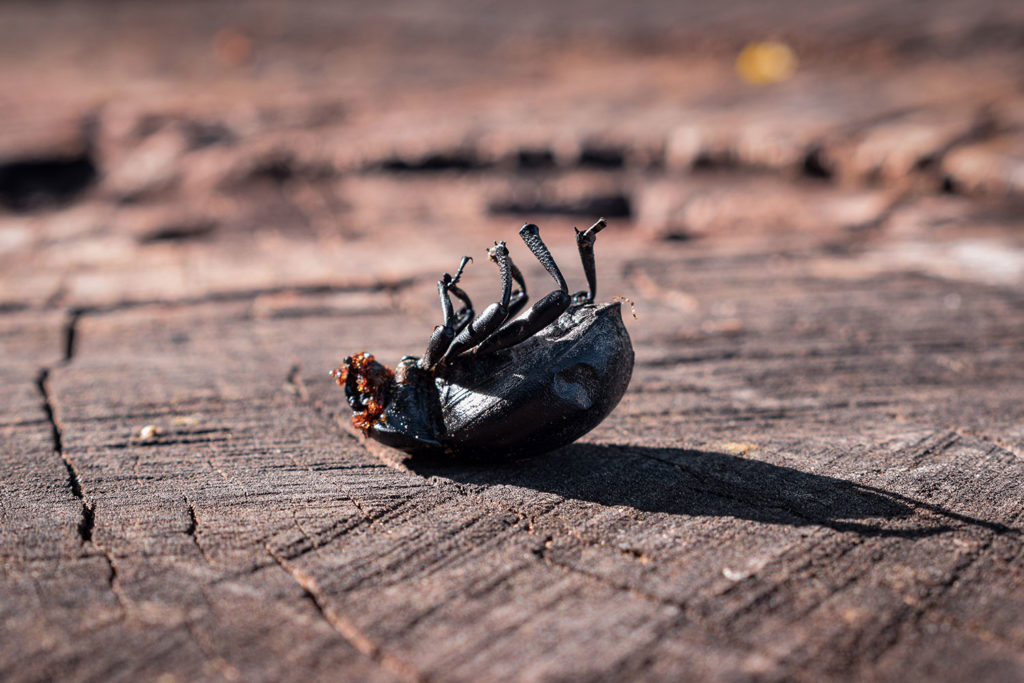By Ray Bohlin
The Misuse of Artificial Selection
Most people assume that evolution allows almost unlimited biological change. Even so, a few simple observations show that there are indeed limits to biological change. Certainly the ubiquitous presence of convergence suggests that biological change is not limitless since evolution appears to arrive at certain solutions again and again. There appear to be only so many ways that organisms can propel themselves through water, over land or through the air. The wings of insects, birds and bats, though not ancestrally related, all show certain design similarities. At the very least, various physical parameters constrain biological change and adaptation. Certainly there are physical constraints. But what about biological constraints?
In arguing for extensive evolutionary change, Darwin relied heavily on the analogy between artificial selection and natural selection. Darwin, a skilled breeder of pigeons, recognized that just about any identifiable trait could be accentuated or diminished through careful breeding (i.e., artificial selection). Darwin then reasoned that a similar form of selection also occurred in nature (i.e., natural selection) and could accomplish the same thing. It would just need more time.
But artificial selection has proven just the opposite. For essentially every trait, although it usually harbors some variability, there has always been a limit. Whether the organisms or selected traits are roses, dogs, pigeons, horses, cattle, protein content in corn, or the sugar content in beets, selection certainly has an effect. But all selected qualities eventually fizzle out. Chickens don’t produce cylindrical eggs. We can’t produce a plum the size of a pea or a grapefruit. There are limits to how far we can go. Some people grow as tall as seven feet, and some grow no taller than three; but none are over twelve feet or under two. There are limits to change.
But perhaps the most telling argument against the usefulness of artificial selection as a model for natural selection is the actual process of selection. Darwin called it artificial selection. A better term would have been intentional selection. The phrase artificial selection makes it sound simple and undirected. Yet every breeder, whether of plants or animals, is always looking for something in particular. The selection process is always designed to a particular end.
If you want a dog that hunts better, you breed your best hunters hoping to accentuate the trait. If you desire roses of a particular color, you choose roses of similar color hoping to arrive at the desired shade. In other words, you plan and manipulate the process. Natural selection can do no such thing. Natural selection, by contrast, operates with no plan and is at the mercy of whatever variations come along. Trying to compare a directed to an undirected process offers no insight into evolution at all.
The Real Power of Natural Selection
It is instructive that we had to wait until the 1950s, almost 100 years after the publication of Darwin’s Origin of Species, for a documented case of natural selection, the famous Peppered Moth (Biston betularia). The story begins with the observation that before the industrial revolution, moth collections of Great Britain contained the peppered variety, a light colored, but speckled moth. With the rise of industrial pollution, a dark form or melanic variety became more prevalent. As environmental controls were enacted, pollution levels decreased and the peppered variety made a strong come back.
It seemed that as pollution increased, the lichens on trees died off and the bark became blackened. The previously camouflaged peppered variety was now conspicuous and the previously conspicuous melanic form was now camouflaged. Birds could more readily see the conspicuous variety and the two forms changed frequency depending on their surrounding conditions. This was natural selection at work.
There were always problems with this standard story. What did it really show? First, the melanic form was always in the population, just at very low frequencies. So we start with two varieties of the peppered moth and we still have two forms. The frequencies change but nothing new has been added to the population. Second, we really don’t know the genetics of industrial melanism in these moths. We don’t have a detailed explanation of how the two forms are generated. And third, in some populations, the frequencies of the two moths changed whether there was a corresponding change in the tree bark or not. The only consistent factor was pollution (see Jonathan Wells’s Icons of Evolution, pp. 137-157). The best known example of evolution in action thus reduces to a mere footnote.
Even Darwin’s finches from the Galapagos Islands off the coast of Ecuador tell us little of large scale evolution. The thirteen species of finches on the Galapagos Islands show subtle variation in the size and shape of their beaks based on the primary food source of the particular species of finch. While the finches do show change over time in response to environmental factors-hence natural selection-the change is reversible! The size and shape of their beaks will vary slightly depending if the year is wet or dry (varying the size of seeds produced) and revert back when the conditions reverse. There is no directional change. It is even possible that the thirteen species are more like six or seven species since hybrids form so readily, especially among the ground finches, and survive quite well. Once again, where is the real evolution?
There are many other documented examples of natural selection operating in the wild. But they all show that whereas limited change is possible, there are also limits to change. No one, as far as I know, questions the reality of natural selection. The real issue is that examples such as the Peppered Moth and Darwin’s Finches tell us nothing about evolution.
Mutations Do Not Produce Real Change
While most evolutionists will acknowledge that there are limits to change, they insist that natural selection is not sufficient without a continual source of variation. In the Neo-Darwinian Synthesis, mutations of all sorts fill that role. These mutations fall into two main categories, mutations to structural genes and mutations to developmental genes. I will define structural genes as those which code for a protein that performs a maintenance, metabolic, support or specialized function in the cell. Developmental genes influence specific tasks in embryological development and therefore can change the morphology or actual appearance of an organism
Most evolutionary studies have focused on mutations in structural genes. But in order for large scale changes to happen, mutations in developmental genes must be explored.
We’ll come back to these developmental mutations a little later.
Most examples that we have of mutations generating supposed evolutionary change involve structural genes. The most common example of these kinds of mutations producing significant evolutionary change involves microbial antibiotic resistance. Since the introduction of penicillin during World War II, the use of antibiotics has mushroomed. Much to everyone’s surprise, bacteria have the uncanny ability to become resistant to these antibiotics. This has been trumpeted far and wide as real evidence that nature’s struggle for existence results in genetic change, evolution.
But microbial antibiotic resistance comes in many forms that aren’t so dramatic. Sometimes the genetic mutation simply allows the antibiotic to be pumped out of the cell faster than normal or taken into the cell more slowly. Other times the antibiotic is deactivated inside the cell by a closely related enzyme already present. In other cases, the molecule inside the cell that is the target of the antibiotic is ever so slightly modified so the antibiotic no longer affects it. All of these mechanisms occur naturally and the mutations simply intensify an ability the cell already has. No new genetic information is added (see Lester and Bohlin, The Natural Limits of Biological Change, pp. 103, 170).
The great French evolutionist Pierre-Paul Grassé, when addressing mutations in bacteria, remarked, “What is the use of their unceasing mutations if they do not change? In sum the mutations of bacteria and viruses are merely hereditary fluctuations around a median position; a swing to the right, a swing to the left, but no final evolutionary effect” (Evolution of Living Organisms, p. 87).
So far I have been describing what is commonly called microevolution. Evolutionists have basically assumed that the well-documented processes of microevolution eventually produce macroevolutionary changes given enough time. But this assumption is itself problematic.
Natural Selection Does not Produce New Body Plans?
A fundamental question that now needs to be addressed is how sponges, starfish, cockroaches, butterflies, eels, frogs, woodpeckers and humans all arose from single-cell beginnings without design, purpose or plan. All such organisms have very different body plans. How can all these different body plans arise from mutation and natural selection? This is a far bigger and more difficult problem than antibiotic resistance, which only requires small biochemical changes. The question, then, is how morphological change comes about.
The problem of macroevolution therefore requires developmental mutations. We somehow have to change how the organism is built. Structural genes tend to have little effect on the development of a body plan. But the genes that control development, and thus ultimately influence the body plan, tend to find expression quite early in development. But this raises its own problems because the developing embryo is quite sensitive to early developmental mutations. As Wallace Arthur notes (The Origin of Animal Body Plans, p. 14), “Those genes that control key early developmental processes are involved in the establishment of the basic body plan. Mutations in these genes will usually be extremely disadvantageous, and it is conceivable that they are always so.”
If developmental mutations that can offer actual benefit are so rare, then macroevolution would be expected to be a slow, difficult and bumpy process. Darwin indicated as much in the concluding chapter of his Origin of Species: “As natural selection acts solely by accumulating slight, successive, favorable variations, it can produce no great or sudden modifications; it can only act in short and slow steps.”
Accordingly, not only is the type of mutation a problem but so is the rate of mutation. Susumo Ohno points out that “it still takes 10 million years to undergo 1% change in DNA base sequences …. [The] emergence of nearly all the extant phyla of the Kingdom Animalia within the time span of 6-10 million years can’t possibly be explained by mutational divergence of individual gene functions” (“The Notion of the Cambrian Pananimalia Genome,” PNAS 93(1996): 8475-78).
Along the way, functional organisms must assume intermediate forms. But even the functionality of these intermediate organisms transforming from one body plan to another has long puzzled even the most dedicated evolutionists. Stephen Jay Gould, the late Harvard paleontologist asked, “But how can a series of reasonable intermediates be constructed? . . . The dung-mimicking insect is well protected, but can there be any edge in looking only 5 percent like a turd?” (Ever Since Darwin, p. 104)
With his usual flair, Gould asks a penetrating question. There do indeed appear to be built in limits to evolutionary change.
Published March 30, 2016




